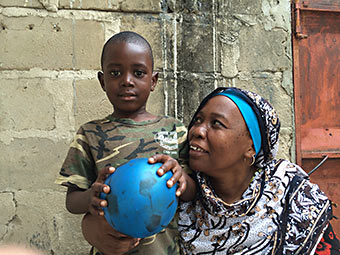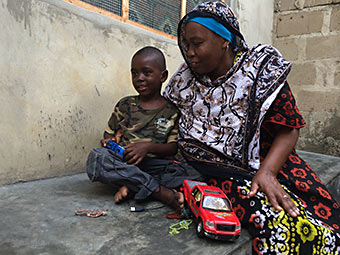Session 10/21
Page 4/7: Topic B: Giving the child a secure personal spaceTopic B: Giving the child a secure personal space



How can you gradually help the child or young person placed in care to feel that they have a personal space, and feel that they belong in the family?
Each child should have its own personal space: To help a child or young person in care feel they belong and have personal space, it’s important to create both physical and emotional spaces for them. This could include decorating their room or space together, having their own chair at the dinner table, or giving them a personal box or closet that only they can access. They should also have private time to relax in their own space, which can help prevent exhaustion, especially for children with emotional or behavioral challenges. Many problems can be prevented if the child knows that ”now I have an hour for myself to relax, play, or do my homework”. Planning regular intervals of private time can be very helpful and prevent issues like staying too long in their room or feeling overwhelmed.
For infants and toddlers: The personal space can also mean having a special item like a teddy bear, doll, or favorite shirt. The family should agree on how to respect the child’s ownership of these items. Caring for a pet, like a calf, goat, or hens, can also help a child build attachment, as bonding with animals is often easier than with people. Many children start forming connections this way.
Support the baby’s/toddler’s growing awareness of itself: Simple activities like playing with mirrors or letting them hear their voice on a phone can be effective. Foster parents can also narrate what the child is doing, such as saying, “You’re trying to button your shirt – it’s not easy, but you’re doing a great job!” This helps the child understand their actions and how they affect others. Focus on highlighting positive behaviors and avoid pointing out mistakes. For example, take regular pictures of the child and talk about their growth: “Look, you’ve grown a quarter of an inch in six months! How does it feel to be so big?” Marking their height on a wall is another fun way to track their progress and build self-awareness.
For older children and teenagers: At a set time every day (bedtime is good), have small dialogues with the child or young person about what happened during the day (or whatever interests the person). Discuss and agree with the child on how to write this in a personal notebook. Gradually, let the child write a small summary by itself. If the child has reading problems, the summary can be recorded on your or the child’s mobile phone. These activities help the child organize their thoughts, build confidence, and feel more secure in their place within the family.
Occasionally, you can take pictures of the child’s activities and place them in the book. Any information about the child’s relatives should also be discussed with the child and noted.
Make a routine of taking a picture or a video every week or month of the child, and talk about the physical changes and developments as the child grows. Talking about what is characteristic in the child’s behaviour and what makes it special and different from other children is very useful. Also, talk about what is characteristic in the way it interacts with others (” You always pay attention when you talk to me, and you look me in the eyes – that makes me happy!”).
Caregiver filming a child’s activity
REFLECTIONS
10 minutes
- How did these suggestions inspire you? What can you do at home?
- Do you have good practices, traditions or ideas for promoting the child’s sense of having a personal space and feel at home?
- How can you help the child become more aware of itself, and understand how it interacts with other members in the family?
- What activities do you think will help your child become more aware of it’s own behaviour, and how this behaviour affects others?
For example: write in a diary each day, record video on your mobile phone, playing with mirrors, etc.
